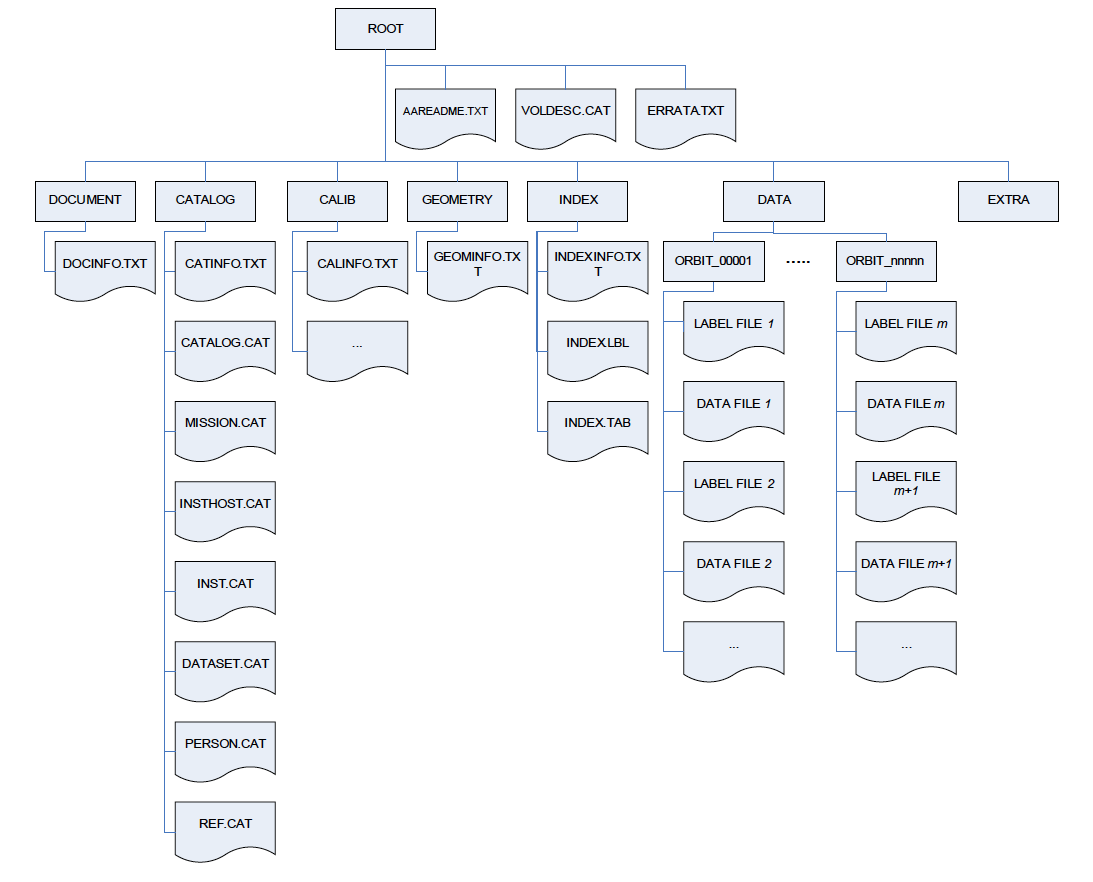PDS3 Standards - PSA
Introduction to PDS
The Planetary Data System (PDS) Standard provides guidelines on how a data producer should construct a data set suitable for long-term archiving. The standard contains a number of requirements in terms of data set structure and documentation that should allow for any PDS compliant data set to be used and understood many years after the close of a mission. In addition, the use of the standards should allow for cross compatibility with any other PDS compliant data set.
When the PSA was first established, PDS version 3 was in place, and was used for all missions (SMART-1, Huygens, Mars Express, Venus Express and Rosetta). This standards version is described in further detail below. The newer version of the standards (PDS4), is now in use on ExoMars, BepiColombo and our future missions. You can learn more about PDS4 here.
Overview of PDS3 Standard
As a general rule, each data product must be labelled in ASCII with full details on the structure and content of the product. The label can be attached to the data file itself or detached in a separate 'label' file with the suffix LBL. A user should look carefully through the labels provided with each product they wish to use as many useful parameters are contained there. Also in the label is the meta-data (descriptive elements) that is needed for a tool to access and interpret the associated product. The standard encourages data producers to design simple data types and data structures, which eases the access to the data products.
An integral part of the standard is the required set of catalog files. These are a set of plain ASCII formatted files that contain top-level information on key aspects of a data set, and should be read carefully by anybody wanting to utilise the data. The catalog files are in the CATALOG directory of a data set, and include:
- The data set description (data set catalog file)
- The spacecraft description (instrument_host catalog file)
- An instrument description (instrument catalog file)
- The mission description (mission catalog file)
- All references used in the data set documentation and catalog files (reference catalog file)
- Personnel information (personnel catalog file)
- The data set collection description (dataset collection catalog file, optional)
- The target information (target catalog file, optional)
Additionally, the standard requests a well-defined directory structure. All catalog files e.g. need to be accessible from a directory named CATALOG. The top-level directory must contain a file named VOLDESC.CAT that describes the whole archive volume.
Documentation is found below the directory named DOCUMENT and software can be archived below the SOFTWARE directory. Software products might include visualisation, analysis or calibration routines. Details of the standards and a link to the full Standards Reference document can be found on the PDS web site.
PSA implementation of the PDS3 Standard
It was decided at an early stage that the Planetary Science Archive would use NASA's Planetary Data System (PDS) standard as a baseline for defining the structure and format of the data sets. At the time of archive definition, PDS3 was already a well known and understood data standard within the planetary science community. Use of this standard also ensures cross-compatibility with all other PDS compliant data.
We have good contact and excellent support from several of the PDS Nodes for our missions:
- Mars Express: Support and consultation provided by PDS Geosciences Node. Data are hosted both at PSA and PDS.
- Rosetta: Support and consultation provided by PDS Small Bodies Node. International mission so data are archived both at PSA and PDS.
- Venus Express: Consultation and peer review support provided by PDS Atmospheres Node.
In order to ensure compliance with the PDS standards and with all of the requirements for ingestion and release in the PSA, some tools were developed by the PSA to validate:
- The syntax of data products and data sets (PVV)
- The structure of the data sets (PVV/PVS)
- All descriptive elements within a data set(PVV/PVS)
- The consistency of descriptive elements between data sets (PVV/PVS)
- The labelling of data (with regard to operation constraints) (PVS)
- Complete validation of syntax, structure, consistency and correctness (DVAL-NG)
Our experiences with the development of our archives (especially with the development of our validation tools) has highlighted several inconsistencies in the PDS3 Standards and the way in which various PDS colleagues interpret them. PSA and PDS are in constant and close consultation to resolve many of these issues and to determine the best way in which PSA can keep up to date with quickly evolving standards. It should be noted that these minor divergences will have no impact on the usability of the data.
Learn more about the archiving process for our PDS3 missions.

